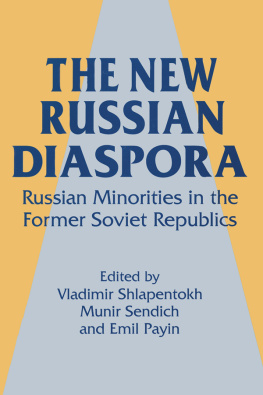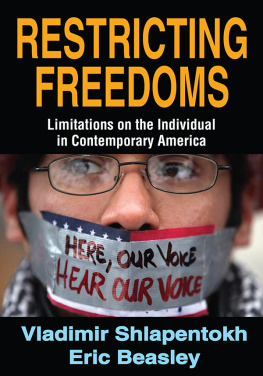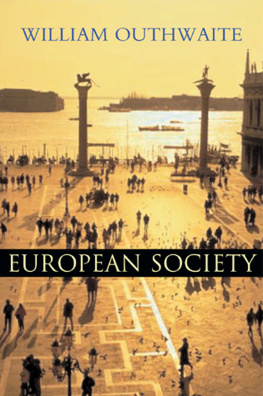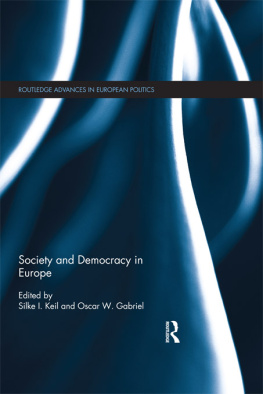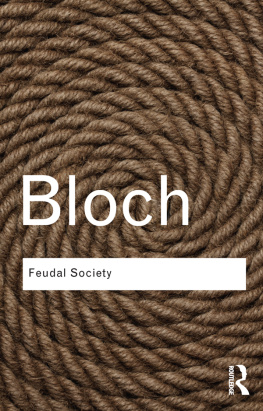Library of Congress
Cataloging-in-Publication Data
Shlapentokh, Vladimir.
Feudal America : elements of the middle ages in contemporary society / Vladimir Shlapentokh and Joshua Woods.
p. cm.
Includes bibliographical references and index.
Summary: Uses a feudal model to analyze contemporary American society, comparing its essential characteristics to those of medieval European societiesProvided by publisher.
ISBN 978-0-271-03781-3 (cloth : alk. paper)
1. United StatesSocial conditions21st century.
2. United StatesPolitics and government21st century.
3. United StatesEconomic conditions21st century.
I. Woods, Joshua.
II. Title. HN59.2.S55 2011
306.097309051dc22 2010039062
Copyright 2011
The Pennsylvania State University
All rights reserved
Printed in the United States of America
Published by
The Pennsylvania State University Press,
University Park, PA 168021003
It is the policy of The Pennsylvania State University Press to use acid-free paper. Publications on uncoated stock satisfy the minimum requirements of American National Standard for Information SciencesPermanence of Paper for Printed Library Material, ANSI Z39.481992.
This book is printed on Natures Natural, which contains 50% post-consumer waste.
Judging by their commentary on American public opinion, their sharp debates on key social issues, and the wide variety of labels they place on society, the critics and observers of the United States seem to be talking about several different countries. Indeed, their portrayals of the country range from fascist state to ideal democracy.
The United States is certainly not the only country to have stimulated debate over its defining characteristics. The Soviet Union, for instance, was the subject of a wide range of commentary and analysis. Until its collapse in 1991, many observersboth inside and outside the countrytreated the USSR as a true socialist society, while others regarded it as a brutal totalitarian regime (Shlapentokh, Shiraev, and Carroll 2008). In the post-Soviet period, debates over Russia and other postcommunist countries continued. If some were eager to accept the official definition of Russia as a normal liberal capitalist country, others were no less insistent that labels such as authoritarian and oligarchic should be applied (Shlapentokh with Woods 2007).
Similarly, is France the motor of European integration, a deeply nationalist country in search of grandeur, a true democracy, a champion of egalitarianism, or a society with growing authoritarian and discriminatory tendencies? Italy, in its turn, has been described as a normal democratic society and an oligarchy, as well as a criminal society ruled by mafias. Iran is seen by some as a healthy Islamic democracy and by others as a highly repressive theocracy. Popular labels for China range from a normal totalitarian regime to a fledgling liberal capitalist society.
Returning to the United States, we see sharp disagreements among journalists, scholars, and politicians on whether or to what extent the term liberal capitalism, including genuine political and economic competition, accurately describes U.S. society. It is difficult to deny the considerable influence of corporations and political clans on the election process, the importance of personal relations in business and politics, the frequent disregard of merit in the hiring and selection procedures of public and private organizations, the privatization of public space, the walling of wealthy American neighborhoods, the widespread use of private security, and the independent control of violent force. While there is agreement that deviations from ideal liberalism exist, there is general disagreement about the seriousness of these problems, how long they will persist, and how they became problems in the first place.
One camp, the true believers in liberal capitalism, suggests that all such problems are temporary, accidental deviations from the liberal model. While every society faces considerable challenges, U.S. society is led, for the most part, by honest and able people who can meet these challenges. In other words, the problems derive not from the barrel, but from a few bad apples.
This optimistic vision of liberal capitalism has been attacked from all sides. Those on the far right believe that the country has moved toward an authoritarian model, in which corrupt bureaucrats and government officials violate the principles of liberalism in all spheres of life, while those on the far left insist that American society has never fit the liberal mold and is currently dominated by big corporations that use the government as a tool for achieving their private interests.
We disagree with all three camps. Many aspects of American society fall into the category of liberalism, and the economy is, for the most part, competitive. The problems that plague the country, however, are not temporary or accidental, but are deeply ingrained in the fabric of society. To an extent, we agree with the position of those on the left but disagree with their views on the origin of these problems and their exaggerated claim that liberal elements do not exist. While U.S. corporations weaken the bureaucracy, encourage corruption, and damage the democratic process, the American people still have a great deal of influence on their leaders. The election of President Barack Obama stands as evidence in favor of the democratic vision of society.
We also question the notion that corporations represent a united front in their dealings with government and the public. Some radicals on the left underestimate the rivalries between individual corporations, the autonomy of the state, the role of the media as critics of corporations, the power of the grassroots organizations scrutinizing corporate activities, and the independence of government officials.
While the countrys social, political, and economic ills are endemic and enduring, they do not derive from a fatal flaw in the essence of liberal democracy. The cause, rather, should be traced to the coexistence of other types of social organization. As seen in many countries, past and present, the United States is a hybrid or segmented society, one that comprises several universal social forms. To glimpse the wholeits functions, dysfunctions, and general characteristicswe need multiple models, including liberal, authoritarian, criminal, religious, and others. Each of these ideal types deserves the attention of scholars. In an effort to fill gaps in the literature, this book focuses on the feudal model, and draws primarily on the liberal and authoritarian models for the sake of comparison.
The idea that feudal elements can be found in contemporary U.S. society may seem historically discordant. After all, the United States, unlike European countries, did not experience a feudal stage in its history. At the same time, feudal developments need not be associated only with the European Middle Ages. Societies encounter feudal tendencies whenever the egotistical interests of the few challenge democratic principles, and do so within the rules of competition in the political and economic spheres.
Our approach is intended to underscore the weakness of describing American society, or any society, with a single model or system. A tendency among scholars and, particularly, politicians to label societies as either liberal or authoritarian rose to prominence in the postwar period. This dichotomous frameworkimbued as it was with cold war ideological leaningssometimes made it difficult to see other forms of social organization in the United States and elsewhere.



